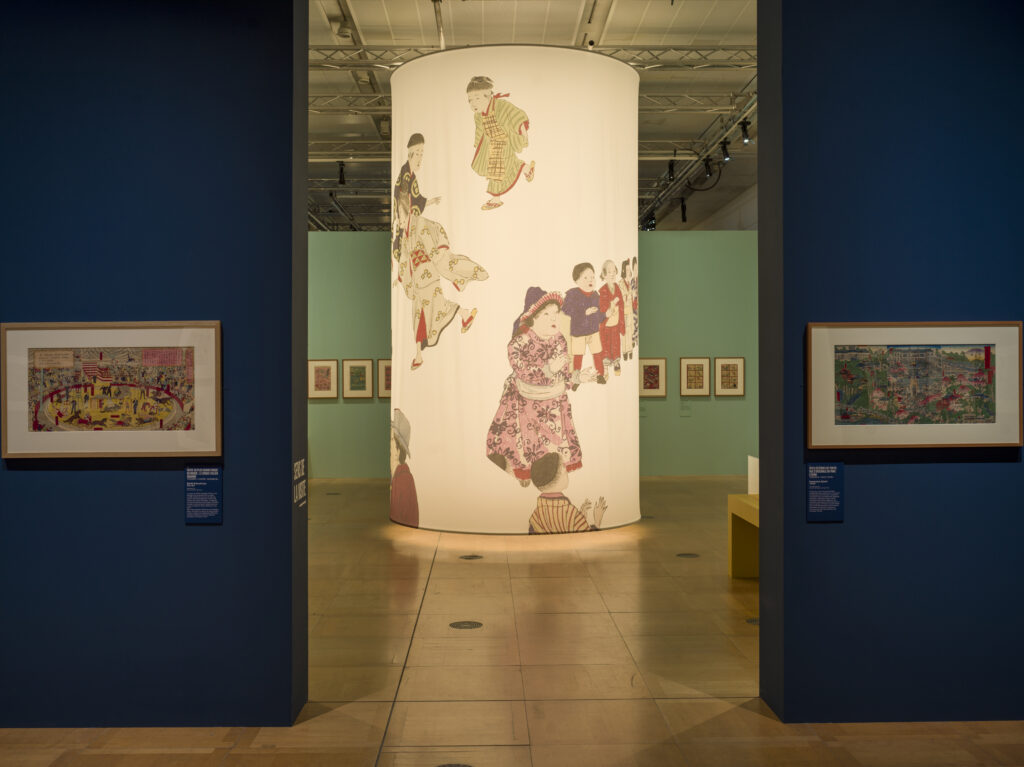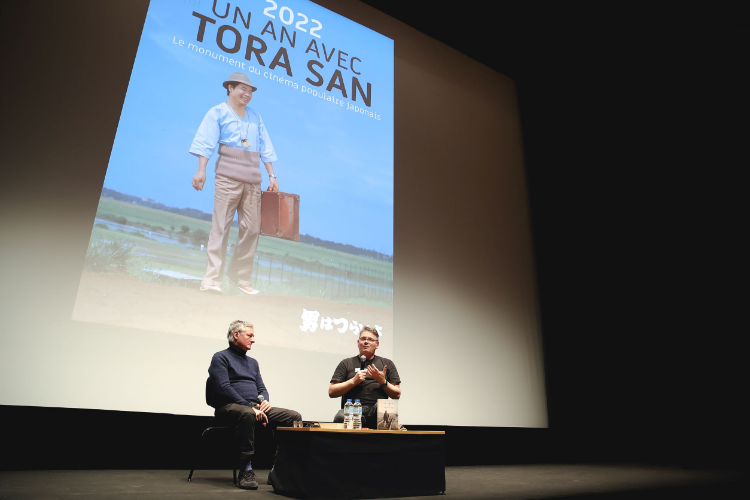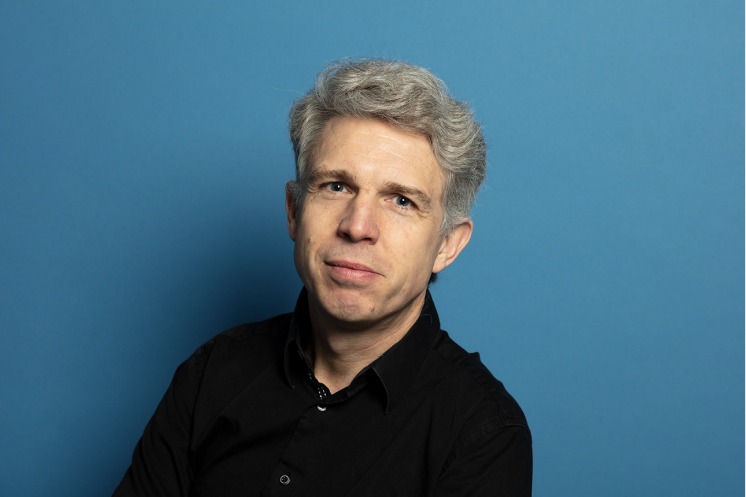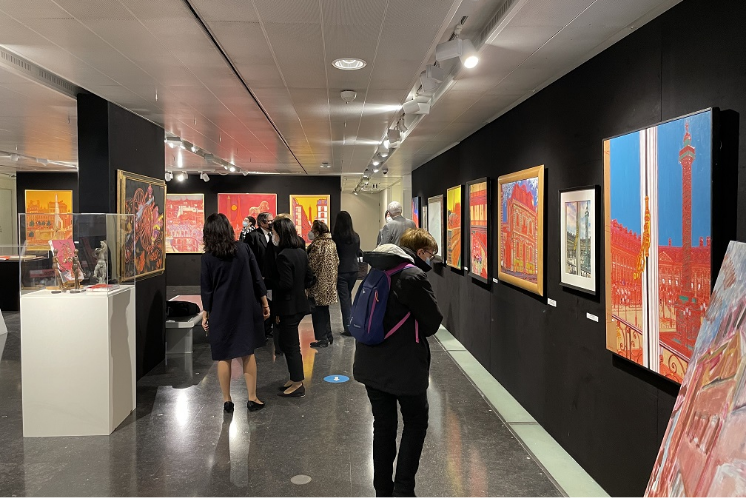2022.10.12
OTHERSThe Hub of Japanese Culture on the Banks of the Seine, Welcome to the Japan Cultural Institute in Paris

For 25 years since its opening in 1997, the Japan Cultural Institute in Paris has been an important presence on the Parisian cultural scene. It is the flagship among the overseas offices of the Japan Foundation. Let us look at the history of this institution that has been connecting the hearts of the people of Japan and France.
Since the late 19th-century boom in popularity of Japanese culture known as “Japonisme,” France has had a long history of cultural exchange with Japan. While the Japan Foundation (JF) had first opened its office in Paris in 1975, French President François Mitterrand’s visit to Japan in 1982 sparked a joint public-private project led by the leaders of both countries to establish a center where Japan’s culture could be introduced to France. In 1997, the Japan Cultural Institute in Paris, or “Maison de la culture du Japon à Paris” (MCJP), one of the world’s largest centers of Japanese culture, opened its door. The cooperation of the member companies of “Amicale au Japon pour la Maison de la culture du Japon à Paris” (Nihon Tomo no Kai) has played a major role in the public-private partnership of this cultural center.
Institution with a Large Hall and a Tea Room, Also Popular in “Japonismes 2018”
MCJP, close to the Eiffel Tower and located on the left bank of the Seine, is distinguished by its arc-shaped glass exterior. The 11-floor building, with six floors above ground and five underground, includes a large hall that can accommodate 300 people, a small hall, a library, a Japanese tea ceremony room, and an exhibition hall of approximately 450 m2.
Up until now, the facility has hosted exhibitions, film screenings, stage performances, concerts, lectures, and various classes and workshops, including Japanese language courses. Professor Michael Lucken of the Institut National des Langues et Civilisations Orientales (INALCO) said, “It is rare to meet people in the French art and academic community who are not aware of the existence of MCJP.” MCJP’s early days were characterized by large-scale and memorable exhibition projects, such as the “Jomon” exhibition in 1998 and the “Yayoi Kusama” exhibition in 2001. Recently, a new direction can be seen with the “Children of the Meiji Era” exhibition, which was held to introduce the change in Japanese society and representations of children through ukiyo-e prints of the Meiji Period.

From March to May 2022, the “Children of the Meiji Era” exhibition was held jointly with the Machida City Museum of Graphic Arts. The exhibition introduced the changes in Japanese society due to civilization and enlightenment through approximately 140 materials and works, mainly children’s ukiyo-e prints from the Meiji period, which also showed how the children learned and played. Photo: ©Grégoire Cheneau
From 2018 to 2019, “Japonismes 2018: les âmes en résonance” (“Souls in Resonance”), a festival of Japanese arts and culture, was held mainly in Paris. During the festival, MCJP also held a number of events. These included the introduction of local cultures in the “Vitality of Local Cultures and Matsuri;” performances from the contemporary theater series “Throw Away Your Books, Let’s Get onto the Streets,” directed by FUJITA Takahiro; a performance called “Project France, Japan 2018 – The Sacred Drums Zuiho Taiko in France;” and the Ikebana exhibition that brought together five schools: Ikenobo, Ichiyo School of Ikebana, Ohara School of Ikebana, Sogetsu School, and Mishoryu.
The “Foujita, Works of a Life (1886–1968)” exhibition was so popular that admission was restricted for a while. It featured works by the leading painter of the École de Paris, which were exhibited for the first time ever abroad. Visitors commented that they wanted to know more about Japan, and that they wanted more events related to Japan to be held in France.
Beyond the Coronavirus Pandemic, Connecting through Haiku and “Tora-san”
On the other hand, the recent coronavirus pandemic has cast a heavy shadow over the activities of MCJP. Amidst such circumstances, a haiku competition for cultural exchange between Japan and France called “Malgré la distance” (“Despite the Distance”) was organized under the concept of sharing one’s thoughts and encouraging one another through haiku at a time when people were not able to easily communicate with each other. From August to October 2020, haiku in both Japanese and French were submitted online. A total of 1,696 haiku were submitted from all over the world, and the winning haiku was announced online after online voting and selection by a panel of judges. Known as “Haïku” in France, the poetry style is widely known and has been adopted in classes at school. Some of the winning haiku were written as part of classes at public elementary schools in France.
In January 2022, “Un an avec Tora san” (“One Year with Tora-san”) began, a year-long series of screenings of all 50 films in the iconic Japanese film series, “Otoko wa Tsuraiyo” (“It’s Tough Being a Man”). The “Tora-san” films have rarely been screened in France, but the popularity of the series, which is set in various parts of Japan from the period of rapid economic growth to the 1990s, has attracted many people to the screenings―more than 200 on some occasions—as people are drawn by the depiction of typical Japanese human emotions. Some commented in the visitor survey that they were glad to be able to experience the humanity of ordinary Japanese people, and that in the midst of the COVID-19 pandemic, the warmth and humor of human contact depicted within the movie was deeply moving.

In November 2021, a pre-event for the “Un an avec Tora san” (“One Year with Tora-san”) screening project was held. The event featured advance screenings of the first film, “Otoko wa Tsuraiyo,” and the fifth film, “Otoko wa Tsuraiyo: Bokyo-hen,” as well as a lecture by Mr. Claude Leblanc. Mr. Leblanc is the author of “Le Japon vu par Yamada Yôji” (“Japan As Seen by YAMADA Yoji”), 2021, and is a reporter for the Asian region for L’Opinion newspaper, with a great depth of knowledge of Japanese films, and the founding editor-in-chief of Zoom Japon magazine. Photo: ©SAWADA Hiroyuki ©SHOCHIKU CO., LTD.
This year, which marks the institution’s 25th anniversary, MCJP has established a “Medium-Term Vision 2022-2026” for activities, which will focus on the following five areas: 1) contributing to overcoming the challenges the world faces as represented by the SDGs; 2) refining the Japanese brand; 3) becoming a “window to Japan” for the world by taking advantage of the tailwind from the Rugby World Cup to be held in France, and the Paris Olympics and Paralympics; 4) expanding its reach; and 5) further promoting the recognition of MCJP.
MCJP director SUZUKI Hitoshi, who assumed the position in 2021, expressed his ambitions for the future saying, “As the world enters a period of great change, including the new coronavirus and the situation in Ukraine, MCJP hopes to bring people together through the power of culture, and to also bring joy and hope. By conveying the qualities of Japanese society and culture through a variety of cultural activities, we aim to contribute to the realization of a sustainable society, providing clues to solving global issues. We would also like to serve as a “place” where people with different values from both Japan and France can gather and have discussions.”
Prof. Lucken gave the following words of encouragement. “I always look forward to the activities of MCJP. I also look forward to meeting Japanese studies scholars and students in the library. Generally, culture is not an ‘object,’ so the facility cannot be a ‘showcase.’ Also, for a project to move people’s hearts, it is essential to understand their expectations. Now, while all French people know about Japan, it does not mean that they know the same Japan. People see Japan through different filters: contemporary literature, the practice of martial arts, anime, Buddhism, contemporary art, and cuisine. It would be preferable if MCJP could enrich these areas and also promote more exchanges between French and Japanese people in these fields.”

Michael Lucken, Professor at the Institut National des Langues et Civilisations Orientales (INALCO). In 2002, he was awarded the 19th Shibusawa-Claudel Prize for his book “L’art du Japon au vingtième siècle” (English translation: “Japanese Art in the 20th Century”). Photo: © Francesca Mantovani pour les Editions Gallimard

In February 2022, the exhibition “To the Eternally Beloved Paris «Paris je t’aime! pour l’éternité… »” was held in the ground-floor hall. This was an homage exhibition held on the occasion of the one-year anniversary of the death of Kojiro Akagi, who was once called “the most Parisian of all Japanese painters” by French President Jacques Chirac.
【Relate pages】
Souls in Resonance, The Legacy of “Japonismes 2018”
